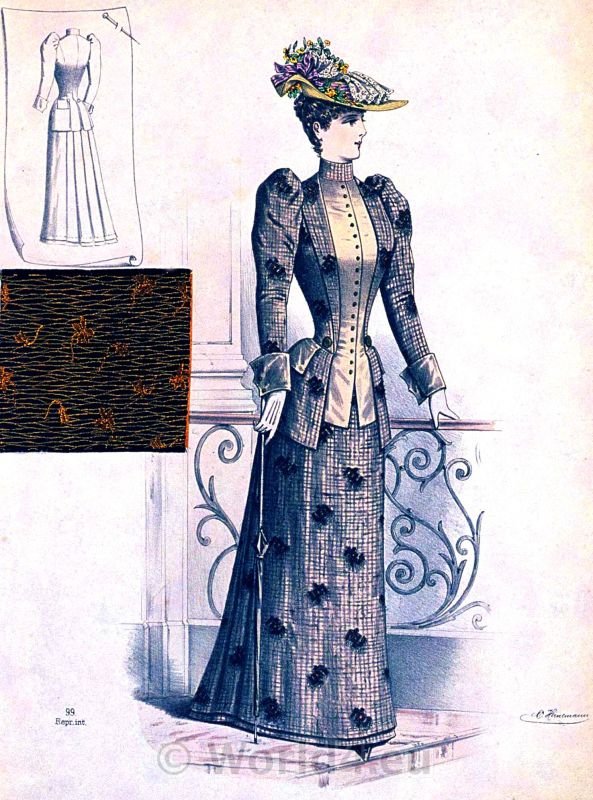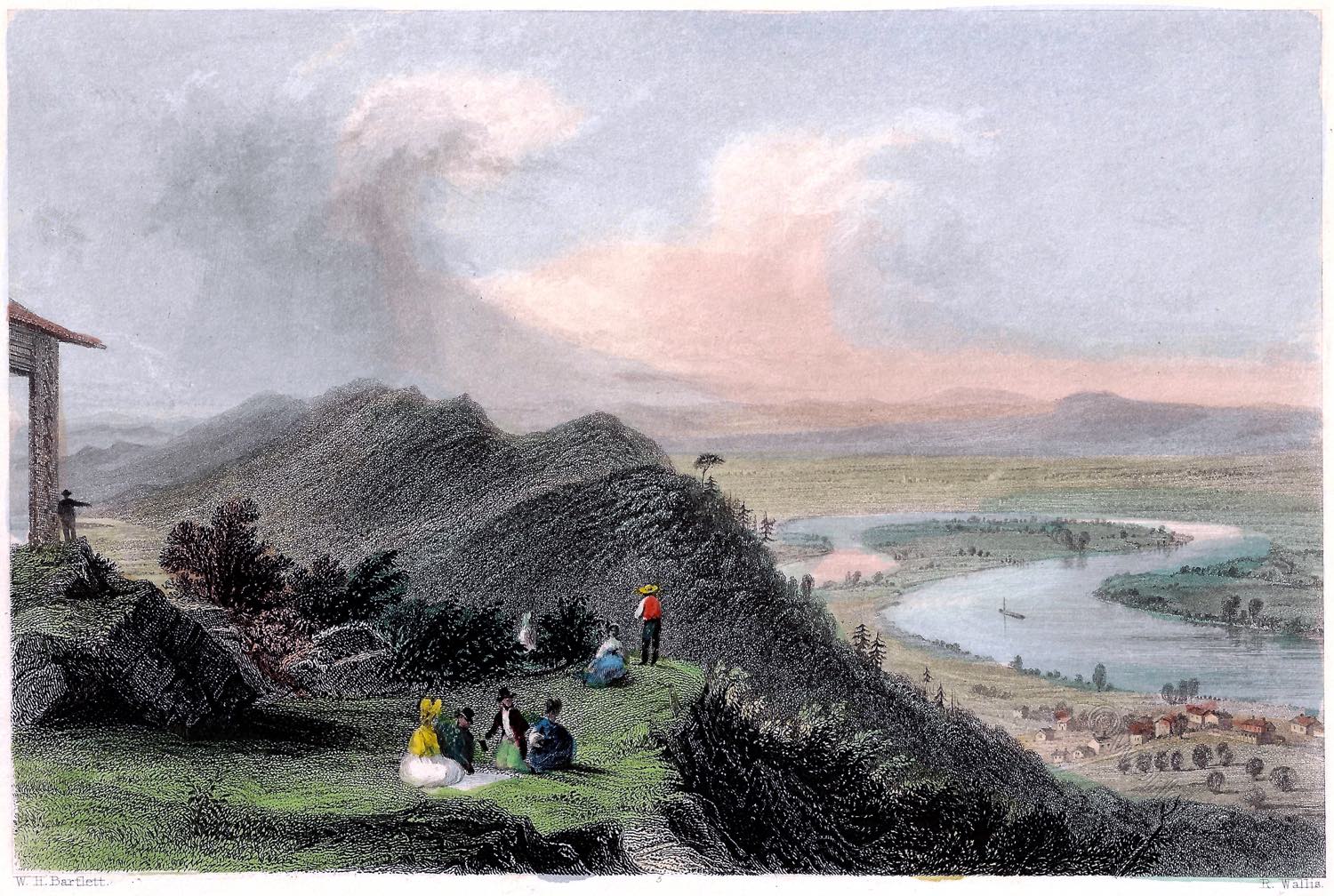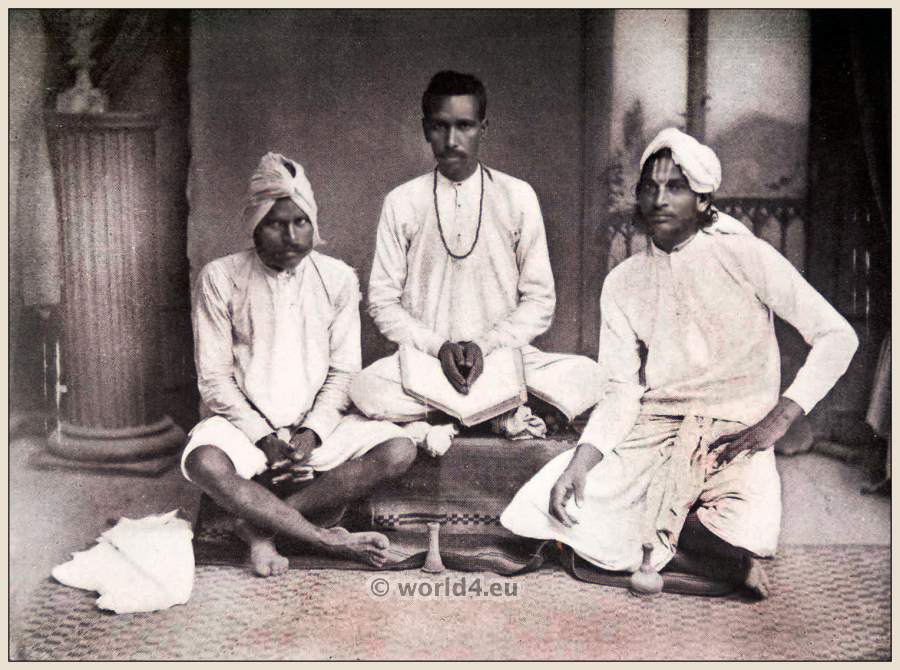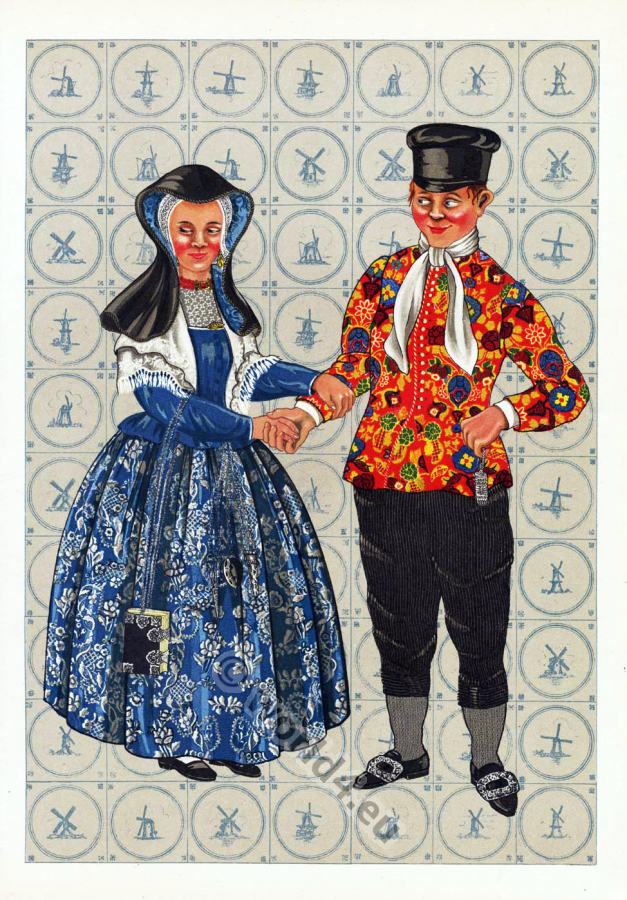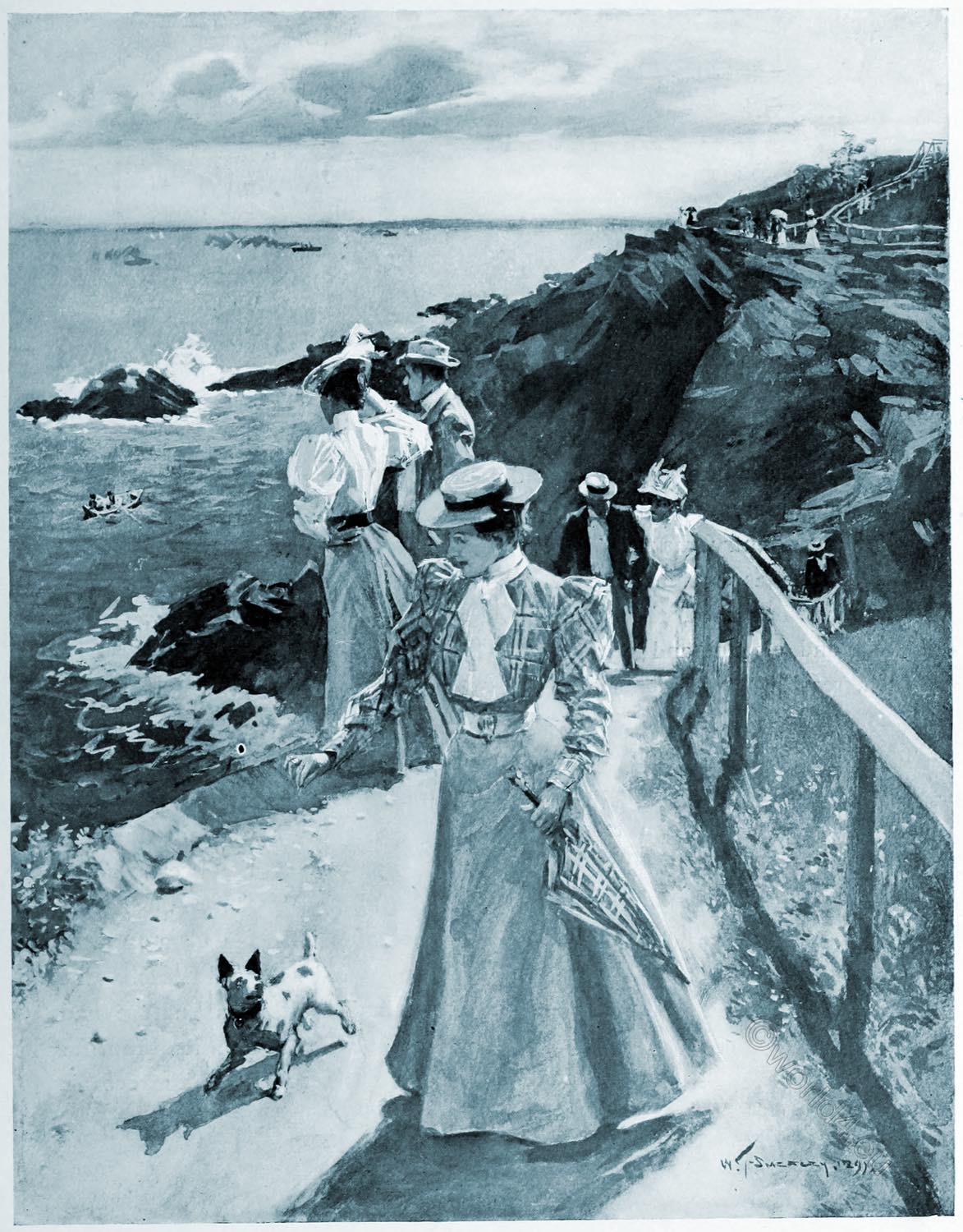
The Cliffs at Nahant
by William Thomas Smedley.
(Belle Époque)
This place was famous in the olden time as one of the favorite haunts of the great sea-serpent. As early as 1638, soon after the settlement of Boston, John Josselyn Gent—we must believe him, because he signed himself “Gent”—used to see the serpent “quoiled up on a rock” at Cape Ann, “a sunning of hisself,” he might have added. But he was more often seen in this neighborhood, where he disported his sinuosity as late as 1817, since which time he appears to have been a homeless wanderer, and to have carried his “shaggy head and glittering eye” to other parts.
Looking north, we see the whole sweep of Swampscott Bay, with Egg Rock and its light-house, and the fishing-smacks dotting the horizon beyond, and the towns of Lynn and Swampscott; to the south we have Boston, and Boston harbor, with its islands, and a view of Blue Hills in the distance; and to the east, the open Atlantic.
The peninsula is beautiful in every respect, with its fine trees, beaches, and cliffs, and “Spouting Rock,” “Pulpit Rock,” “Castle Rock,” and others, about which the waves are ever dashing picturesquely.
This place would afford Mr. Laurence Hutton an opportunity for a “Literary Landmark” booklet, for here it was that Prescott worked on his “Ferdinand and Isabella” and the “Conquest of Mexico,” Motley began his “Dutch Republic,” and Longfellow wrote a good part of “Hiawatha.” Here, also, lived Alexander Agassiz in the summer months, and it is only natural to suppose that much of his finest work was done where he could be alone with nature and his thoughts. And in a little house near the cliffs Mrs. Annie Johnson, although not much known to fame, used to sing her local lyrics.
Published as: “On the Coast of Nahant” in Harper’s bazaar, (Nov. 20, 1897).
Source: Life and character; by William Thomas Smedley (1858-1920). With accompanying text by Andrew Varick Stout Anthony (1835-1906). New York, London, Harper & Brothers Publishers, 1899.
Related
Discover more from World4 Costume Culture History
Subscribe to get the latest posts sent to your email.

